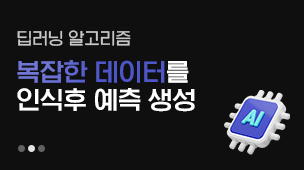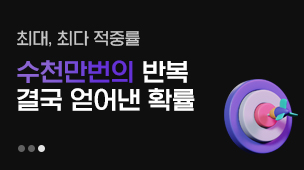15 Top Pinterest Boards From All Time About Titration For ADHD
페이지 정보

본문
ADHD Medication titration for adhd
Titration involves altering a patient's ADHD medication dose until it creates an optimal therapeutic effect. It may take some time to find the ideal dosage of control of symptoms and adverse effects.
It is essential that doctors and patients work together to navigate through the titration process effectively. Here are some suggestions to help you start:
Dosage
ADHD medications are the cornerstone of treatment for many adults and children with attention-deficit/hyperactivity disorder. Finding the right dosage, however, is essential to achieving the desired effect. A high dose could cause serious side effects, while a low dose may not be sufficient to manage symptoms. Fortunately, an individual medication titration process can help patients find the right balance.
titration adhd adults is the process of gradually increasing the dosage of a medication until you reach the optimal level of effectiveness and control. The process can take weeks or even months, but it's vital to ensure that you are receiving the most effective results from your ADHD medication. It also helps to avoid tolerance and minimize side effects.
When you are titrating an ADHD medication, your doctor will start you on a very low dose to determine your response to the medication. They will then gradually increase the dosage based on your symptoms and adverse reactions. Once they've reached the highest dose they are able to safely administer, they'll begin to reduce it.
Titration of medications is crucial for long-acting stimulant drugs. They have a distinct mechanism of action than short-acting stimulants which means that they have to be taken longer in order to get their full effect. It is also important to remember that certain medications may interact with other drugs in various ways.
Another factor that may influence the titration of a medication is the fact that not all people metabolize medications in the same way. This is particularly the case with atomoxetine that is metabolized by CYP2D6. About 7% to 10% of people are poor metabolizers, and can experience side effects even at very low doses.
The process of titrating your medication is a complicated process that requires close monitoring and communication with your healthcare provider. However, by working together, people with ADHD can maximize their treatment plans and reduce the risk of developing tolerance to medications and substance abuse. It's important to regularly visit your doctor and keep an eye on your medication intake by using the CareClinic App. The app comes with tools like medication reminders as well as mood tracking and an symptom diary that makes it easier to monitor your ADHD treatment.
Signs and symptoms
During the titration process the aim is to determine the right medication dose for your child's ADHD symptoms. The ideal dosage will be able to manage symptoms with minimal adverse effects. The way medication works for each individual is different and the titration process aids doctors in determining the correct dosage quickly.
Stimulant drugs (methylphenidate and amphetamines) are able to block the release of dopamine transporter and norepinephrine within the brain, so these neurotransmitters are able to remain in the synapses longer. This improves the signaling of neurons which regulate impulse control and attention. Non-stimulant medications such as Guanfacine and atomoxetine operate through other mechanisms to increase the amount of these neurotransmitters. The titration process should be done under the guidance by a trained physician and is most effective during a period of low stress or when the patient is well-rested.
The most typical indication that a dose is too high is the emergence of severe or debilitating adverse effects. When these symptoms occur, they should be reported to the doctor immediately. The occurrence of these symptoms should be reported to the doctor immediately.
Other signs of a wrong dosage include mood fluctuations sleep issues, mood swings, and tics like blinking or grimacing. The doctor treating the patient must be contacted immediately if these occur, as these could be indications of life-threatening or serious side effects.
The titration procedure is a long procedure, but it's worth it to obtain the appropriate dose of ADHD medication. Utilizing the careClinic App, individuals can log their daily dosages of ADHD medication and share this real-time data with their clinician to allow for an increased collaboration approach to treatment. Complete the Frida ADHD Self-Assessment and receive an individual treatment plan including medications, delivered right to your doorstep.
Side effects
While medication is often prescribed to treat ADHD symptoms however, it's only effective when it's part and parcel of a comprehensive plan. Behavioral therapy, educational support and lifestyle adjustments are also recommended to help individuals manage their symptoms. The medication isn't a cure however it can enhance the quality of life of people with ADHD by assisting them to function more effectively.
Titration is the process of finding the most effective dose to treat ADHD symptoms while minimizing any adverse effects. It begins with a lower dose and then gradually increases in dose until the doctor determines the best dosage that meets each person's requirements. In general, it takes between 8 and 12 weeks to reach the desired dosage of medication.
It is essential to be in close contact with your healthcare provider to ensure that you are getting the most effective results. It is because everybody reacts differently to medication and one dose may not be the right one for everyone. Additionally, if you begin to experience any serious adverse reactions during the titration process it is crucial to inform your doctor immediately.
It is also helpful to be aware of the possible outcomes during the titration process. If you are taking stimulant medication during the titration process, you may experience adverse effects such as nausea, headaches or insomnia. You may also experience increased appetite. Most of these side effects will go away as you become accustomed to the medication.
These side effects result from the body not having adjusted to the new medication. By increasing the dosage slowly gradually, the body will adjust to it. Additionally, if you don't experience any adverse effects, you've probably not reached the target dose of the medication.
You may not have to worry much about side effects if you're using an anti-stimulant drug like Qelbree or Strattera. However, you should always be aware of what the normal range of adverse reactions is for these drugs and discuss them with your healthcare provider.
Schedule
For adults with ADHD who rely on medication, understanding how long does adhd titration take (https://eternalbookmarks.com/story17679439/check-out-how-adhd-titration-private-is-taking-over-and-what-can-we-do-about-it) to navigate the titration process is crucial. The aim is to find a medication dosage that minimizes the risk of side effects and controls ADHD symptoms. It might take some time however it is crucial to keep in contact with your doctor to ensure that you receive the best result possible.
Titration is the process of gradually increasing the dosage of a new ADHD medication until you reach your target dosage. In this time it is vital to observe your symptoms. You should see your doctor each week to discuss side effects and the efficacy of the medication.
The exact timing for titration will vary depending on your age, symptoms, and any side effects. Children should be titrated every 15 days instead of the 30 days suggested by the Food and Drug Administration. This allows for an accurate assessment of the medication, while also giving doctors the ability to ensure that children are on a safe dose as fast as they can.
A typical titration adhd adults schedule starts with a low dose and increases it every seven days until you reach the desired dosage. It could be as high as 18 mg for extended release MPH (Concerta), or 10 mg for controlled release MPH (Biphentin) and 5 mg for mixed amhetamine salts XR.
While blinded N=1 trials are a method of optimizing the dosage of an ADHD medication, they are time-consuming and have not been proved to be more effective than traditional titration methods. A titration adhd medications program allows doctors to evaluate a medication's benefits and side effects more accurately.
It is crucial to keep in mind that the titration process for a new drug can take a while, but it is well worth it. Open communication between you your doctor, your doctor and other professionals can help you find the best treatment plan for you. Speak to your doctor or psychiatrist if you have questions about the process of titration or your particular ADHD medication.
Titration involves altering a patient's ADHD medication dose until it creates an optimal therapeutic effect. It may take some time to find the ideal dosage of control of symptoms and adverse effects.
It is essential that doctors and patients work together to navigate through the titration process effectively. Here are some suggestions to help you start:
Dosage
ADHD medications are the cornerstone of treatment for many adults and children with attention-deficit/hyperactivity disorder. Finding the right dosage, however, is essential to achieving the desired effect. A high dose could cause serious side effects, while a low dose may not be sufficient to manage symptoms. Fortunately, an individual medication titration process can help patients find the right balance.
titration adhd adults is the process of gradually increasing the dosage of a medication until you reach the optimal level of effectiveness and control. The process can take weeks or even months, but it's vital to ensure that you are receiving the most effective results from your ADHD medication. It also helps to avoid tolerance and minimize side effects.
When you are titrating an ADHD medication, your doctor will start you on a very low dose to determine your response to the medication. They will then gradually increase the dosage based on your symptoms and adverse reactions. Once they've reached the highest dose they are able to safely administer, they'll begin to reduce it.
Titration of medications is crucial for long-acting stimulant drugs. They have a distinct mechanism of action than short-acting stimulants which means that they have to be taken longer in order to get their full effect. It is also important to remember that certain medications may interact with other drugs in various ways.
Another factor that may influence the titration of a medication is the fact that not all people metabolize medications in the same way. This is particularly the case with atomoxetine that is metabolized by CYP2D6. About 7% to 10% of people are poor metabolizers, and can experience side effects even at very low doses.
The process of titrating your medication is a complicated process that requires close monitoring and communication with your healthcare provider. However, by working together, people with ADHD can maximize their treatment plans and reduce the risk of developing tolerance to medications and substance abuse. It's important to regularly visit your doctor and keep an eye on your medication intake by using the CareClinic App. The app comes with tools like medication reminders as well as mood tracking and an symptom diary that makes it easier to monitor your ADHD treatment.
Signs and symptoms
During the titration process the aim is to determine the right medication dose for your child's ADHD symptoms. The ideal dosage will be able to manage symptoms with minimal adverse effects. The way medication works for each individual is different and the titration process aids doctors in determining the correct dosage quickly.
Stimulant drugs (methylphenidate and amphetamines) are able to block the release of dopamine transporter and norepinephrine within the brain, so these neurotransmitters are able to remain in the synapses longer. This improves the signaling of neurons which regulate impulse control and attention. Non-stimulant medications such as Guanfacine and atomoxetine operate through other mechanisms to increase the amount of these neurotransmitters. The titration process should be done under the guidance by a trained physician and is most effective during a period of low stress or when the patient is well-rested.
The most typical indication that a dose is too high is the emergence of severe or debilitating adverse effects. When these symptoms occur, they should be reported to the doctor immediately. The occurrence of these symptoms should be reported to the doctor immediately.
Other signs of a wrong dosage include mood fluctuations sleep issues, mood swings, and tics like blinking or grimacing. The doctor treating the patient must be contacted immediately if these occur, as these could be indications of life-threatening or serious side effects.
The titration procedure is a long procedure, but it's worth it to obtain the appropriate dose of ADHD medication. Utilizing the careClinic App, individuals can log their daily dosages of ADHD medication and share this real-time data with their clinician to allow for an increased collaboration approach to treatment. Complete the Frida ADHD Self-Assessment and receive an individual treatment plan including medications, delivered right to your doorstep.
Side effects
While medication is often prescribed to treat ADHD symptoms however, it's only effective when it's part and parcel of a comprehensive plan. Behavioral therapy, educational support and lifestyle adjustments are also recommended to help individuals manage their symptoms. The medication isn't a cure however it can enhance the quality of life of people with ADHD by assisting them to function more effectively.
Titration is the process of finding the most effective dose to treat ADHD symptoms while minimizing any adverse effects. It begins with a lower dose and then gradually increases in dose until the doctor determines the best dosage that meets each person's requirements. In general, it takes between 8 and 12 weeks to reach the desired dosage of medication.
It is essential to be in close contact with your healthcare provider to ensure that you are getting the most effective results. It is because everybody reacts differently to medication and one dose may not be the right one for everyone. Additionally, if you begin to experience any serious adverse reactions during the titration process it is crucial to inform your doctor immediately.
It is also helpful to be aware of the possible outcomes during the titration process. If you are taking stimulant medication during the titration process, you may experience adverse effects such as nausea, headaches or insomnia. You may also experience increased appetite. Most of these side effects will go away as you become accustomed to the medication.
These side effects result from the body not having adjusted to the new medication. By increasing the dosage slowly gradually, the body will adjust to it. Additionally, if you don't experience any adverse effects, you've probably not reached the target dose of the medication.
You may not have to worry much about side effects if you're using an anti-stimulant drug like Qelbree or Strattera. However, you should always be aware of what the normal range of adverse reactions is for these drugs and discuss them with your healthcare provider.
Schedule
For adults with ADHD who rely on medication, understanding how long does adhd titration take (https://eternalbookmarks.com/story17679439/check-out-how-adhd-titration-private-is-taking-over-and-what-can-we-do-about-it) to navigate the titration process is crucial. The aim is to find a medication dosage that minimizes the risk of side effects and controls ADHD symptoms. It might take some time however it is crucial to keep in contact with your doctor to ensure that you receive the best result possible.
Titration is the process of gradually increasing the dosage of a new ADHD medication until you reach your target dosage. In this time it is vital to observe your symptoms. You should see your doctor each week to discuss side effects and the efficacy of the medication.
The exact timing for titration will vary depending on your age, symptoms, and any side effects. Children should be titrated every 15 days instead of the 30 days suggested by the Food and Drug Administration. This allows for an accurate assessment of the medication, while also giving doctors the ability to ensure that children are on a safe dose as fast as they can.
A typical titration adhd adults schedule starts with a low dose and increases it every seven days until you reach the desired dosage. It could be as high as 18 mg for extended release MPH (Concerta), or 10 mg for controlled release MPH (Biphentin) and 5 mg for mixed amhetamine salts XR.
While blinded N=1 trials are a method of optimizing the dosage of an ADHD medication, they are time-consuming and have not been proved to be more effective than traditional titration methods. A titration adhd medications program allows doctors to evaluate a medication's benefits and side effects more accurately.
It is crucial to keep in mind that the titration process for a new drug can take a while, but it is well worth it. Open communication between you your doctor, your doctor and other professionals can help you find the best treatment plan for you. Speak to your doctor or psychiatrist if you have questions about the process of titration or your particular ADHD medication.

- 이전글See What Wall Electric Fireplace Tricks The Celebs Are Using 24.10.22
- 다음글Go to 77snow.com Balykchy buy cocaine 24.10.22
댓글목록
등록된 댓글이 없습니다.





 스포츠토토 유용한 정보
스포츠토토 유용한 정보  가상경기 배팅게임
가상경기 배팅게임 